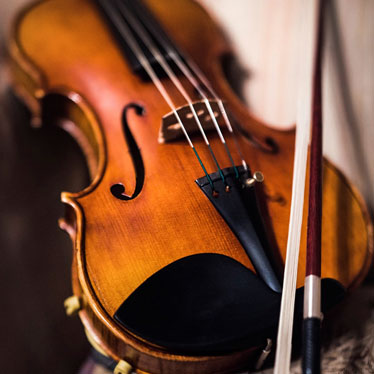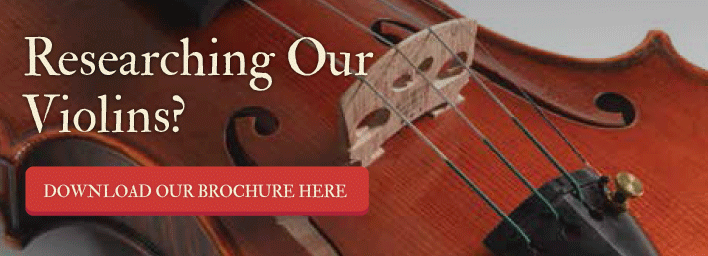What Is The Average Cost Of A Mid-Range Intermediate Student Violin?

There are so many factors that determine the worth of a violin that it’s often very difficult to know exactly what you should pay for a mid-range, intermediate model instrument. The materials and craftsmanship involved during the fabrication process affect the sound and projection qualities of the violin. And while it’s fairly easy (with a little practice) to recognize the differences between a beginner model and a professional grade instrument, with an intermediate violin, the subtle variations are a little harder to detect. Therefore, it’s more challenging to ascertain the value of the violin.
Students who’ve progressed beyond their beginner violin can know it’s time to upgrade by considering a few simple factors. For example, if it becomes more and more difficult to execute or develop new bowing techniques, or if coaxing the correct musical crescendo and decrescendo, or tremolo techniques requires an intense amount of work, it’s time to upgrade. To continue to advance as a musician, you need an instrument that can respond to your abilities.
Knowing the average cost of an intermediate instrument can help you prepare. You may need to save a certain amount of money for a few months, but the investment in a quality intermediate violin is totally worth it. You’ll be able to reach new heights as a musician, and play this violin for many years to come.
What’s the Difference?
The differences between a student (beginner) violin and an intermediate one are largely waveform modulation and aesthetics. Intermediate level violins often feature improved tonal quality, but the real difference is the wider range of tonal possibilities they offer. The tonal variations provided by an intermediate violin are varied and complex compared with a beginner instrument.
In addition, most intermediate violins showcase a more intricate finish. Since higher quality (more exclusive) tonewoods are used, most manufacturers and Luthiers (specialized stringed instrument craftsperson) invest a bit more time and energy into the finishing stages, so these models often look richer, and have a more striking appearance.
These subtle improvements affect the price you’ll pay for an intermediate violin.
Outfits vs. Stand Alone
If you’ve invested in a great quality beginner instrument, then you probably have a good hard case to protect both it and your bow. However, if you’ve decided to upgrade your violin because you’ve progressed as a violinist as well as in physical growth so that you need a larger size instrument, choosing an outfit might be a more affordable option, as opposed to purchasing a new case along with your new intermediate violin.
Outfits include the violin, a molded hard case, and a bow. This is a good time to consider upgrading your bow as well. Carbon fiber composite bows offer an agility and responsiveness that fiberglass or basic Brazil wood bows lack, and can help you improve your execution. You’re investing in an intermediate violin so that you can expand your skills. Upgrading your bow will make learning and practicing new techniques much easier. Plus, a great bow will help your instrument produce its fullest, deepest, most incredible sounds.
Price Ranges
There are actually a number of excellent brand-name intermediate violins offered today. Your favorite music shop or local dealer will typically have stand-alone violins in this category that begin at around $900, with higher end models listed for approximately $2000-$2500. But remember to keep in mind that every violin is unique. The final set-up process makes a huge impact on the sound and tonal variations your instrument will be able to produce.
The average cost for an intermediate violin is about $1300-$1600, depending on whether or not you purchase an outfit.
Tips for Purchasing
Always play the violin before you buy it. Just because it looks beautiful, doesn’t necessarily mean that it will sound that way, and you might discover that newer brands often offer better value for the sound, responsiveness, and rich tones they produce.
It’s also a good idea to take along a few extra pairs of ears. The sounds you hear while playing are slightly different from what your audience hears (naturally), so having a few more listeners can assist your selection process.
When choosing your intermediate violin, take your time. Visit different shops and try out a number of different brands. Knowing what to expect cost-wise will help you plan, but rest assured that the intermediate violin you choose will definitely help you reach new pinnacles as a violinist and provide years of superior playing enjoyment.


